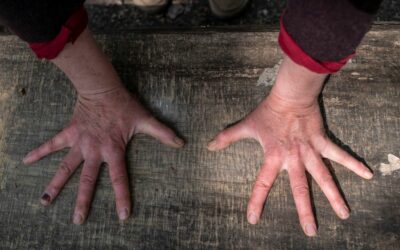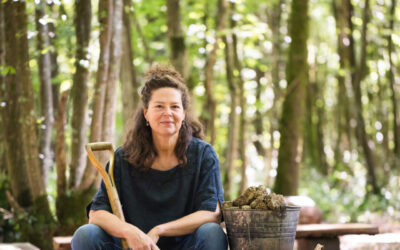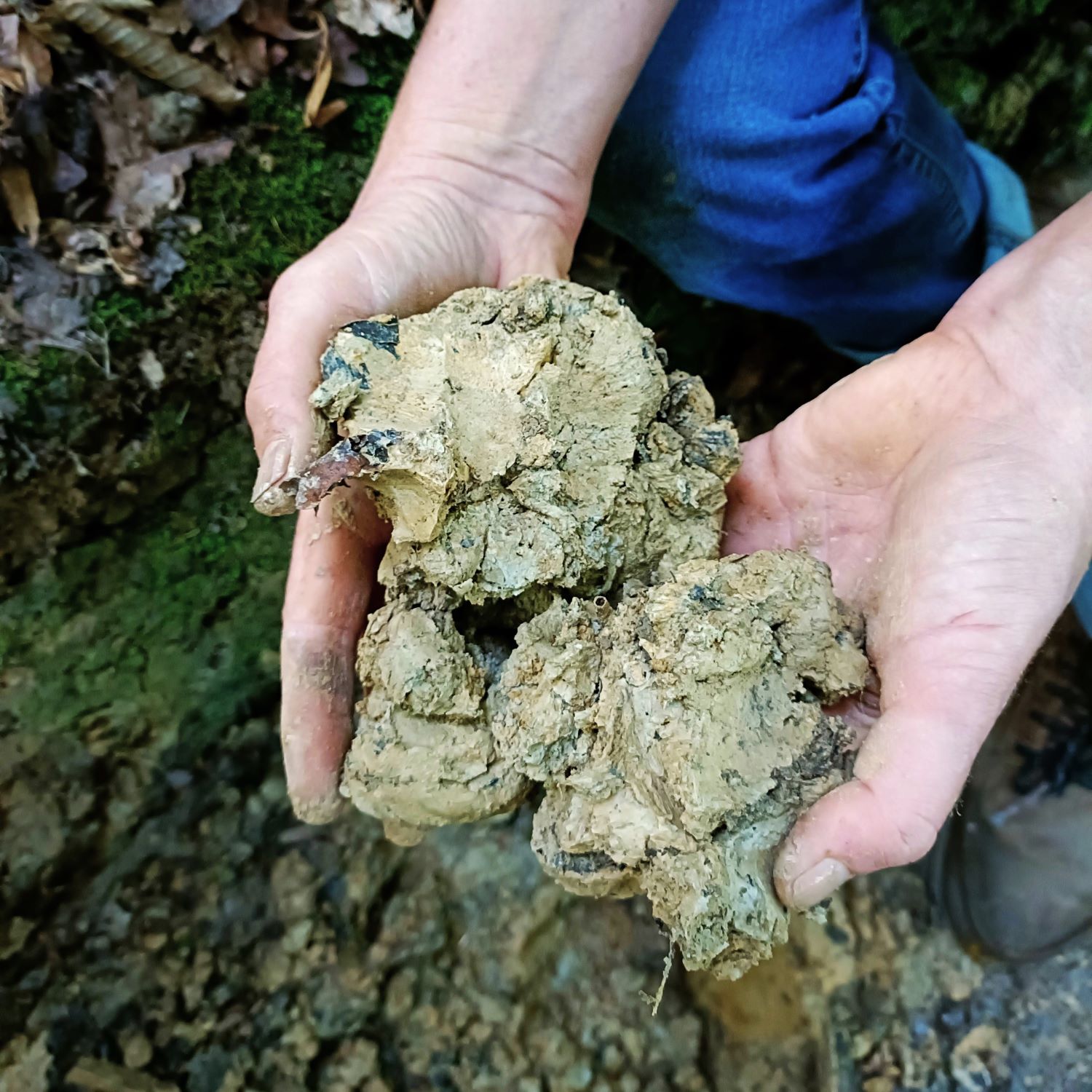
Ankle-deep and barefoot in the cold stream (or thigh-deep as we were one April after a long rainy period), grubbing away at an exposed seam of clay. It’s just like being a child again, squidging clay between our fingers, stirring memories of making mud pies, not caring that we’re wet and our clothes are now dirty.
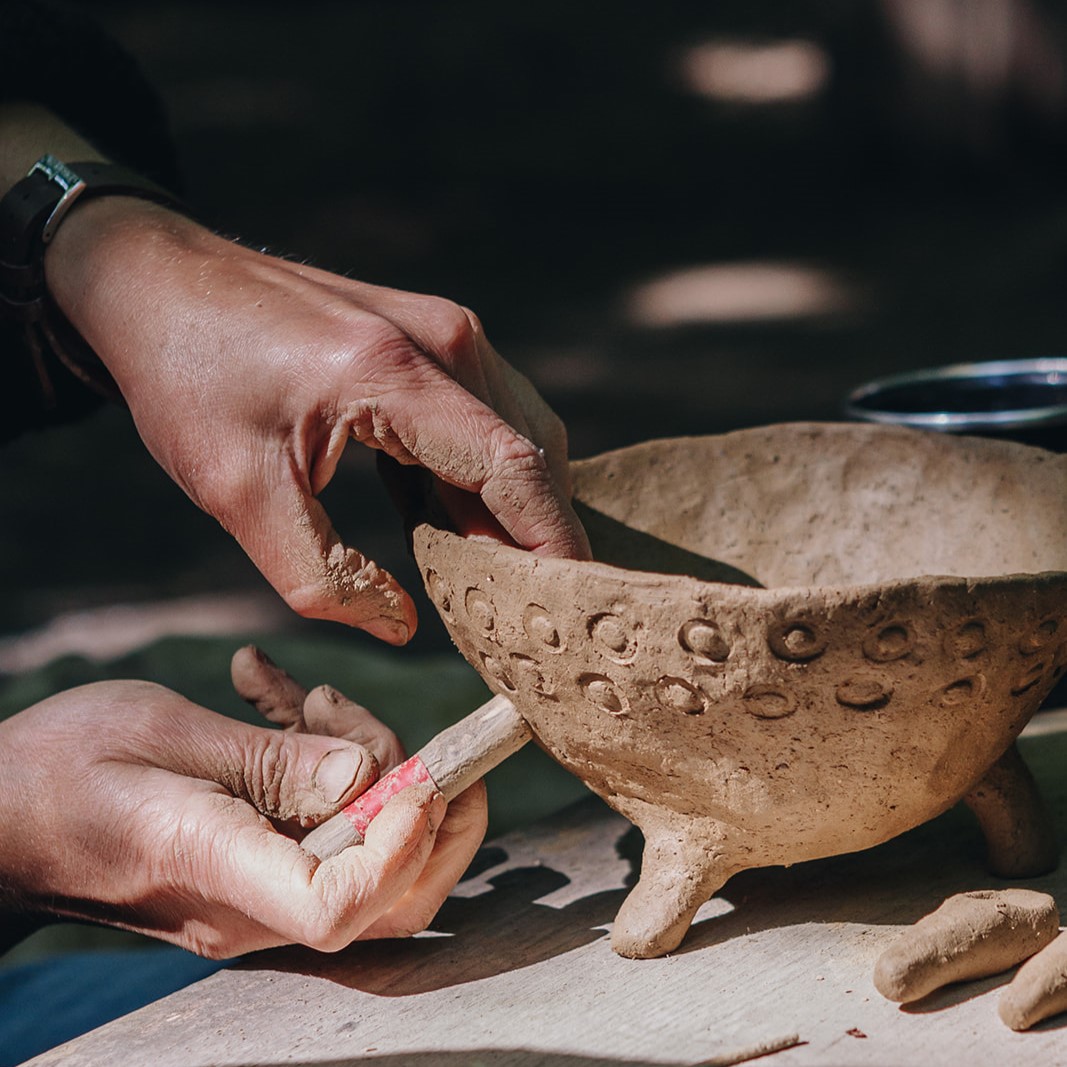
On our last wild pottery course I noticed that as soon as the group started wedging their clay a deep silence settled on the group. When they were making their pots there was a long period of absolute quiet, with just the soft sounds of a summer woodland around us.
It’s a silence and settling that’s particular to working with clay. An atmosphere of quiet, relaxed concentration. Handling clay, particularly raw clay that’s come straight from the ground, is a powerful and primal sensory experience.
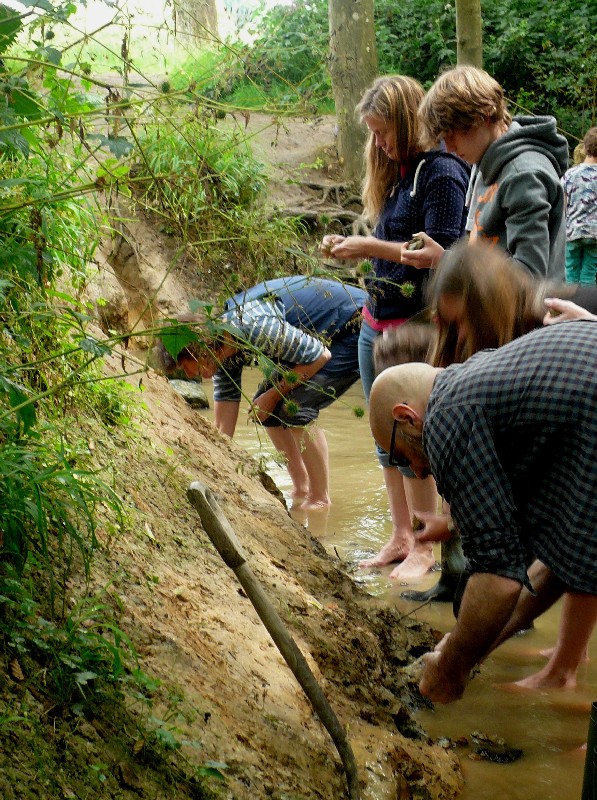
Lots of us haven’t made anything from clay since primary school, and it even then it was most likely commercially produced clay, possibly air-drying ‘clay’, both of which are really bland in comparison to wild clay.
Perhaps that was also the last time many of us got truly stuck into squishing up muddy stuff in our hands.
In the fields of south Oxfordshire where I grew up there was a stream nearby which my sister and I would escape to on our bikes for the day in the summer holidays. We made cave dwellings in the clay banks of the stream for our community of plastic trolls. We spent hours engrossed in it, and made discoveries of fresh water shrimp, watercress and sticklebacks.
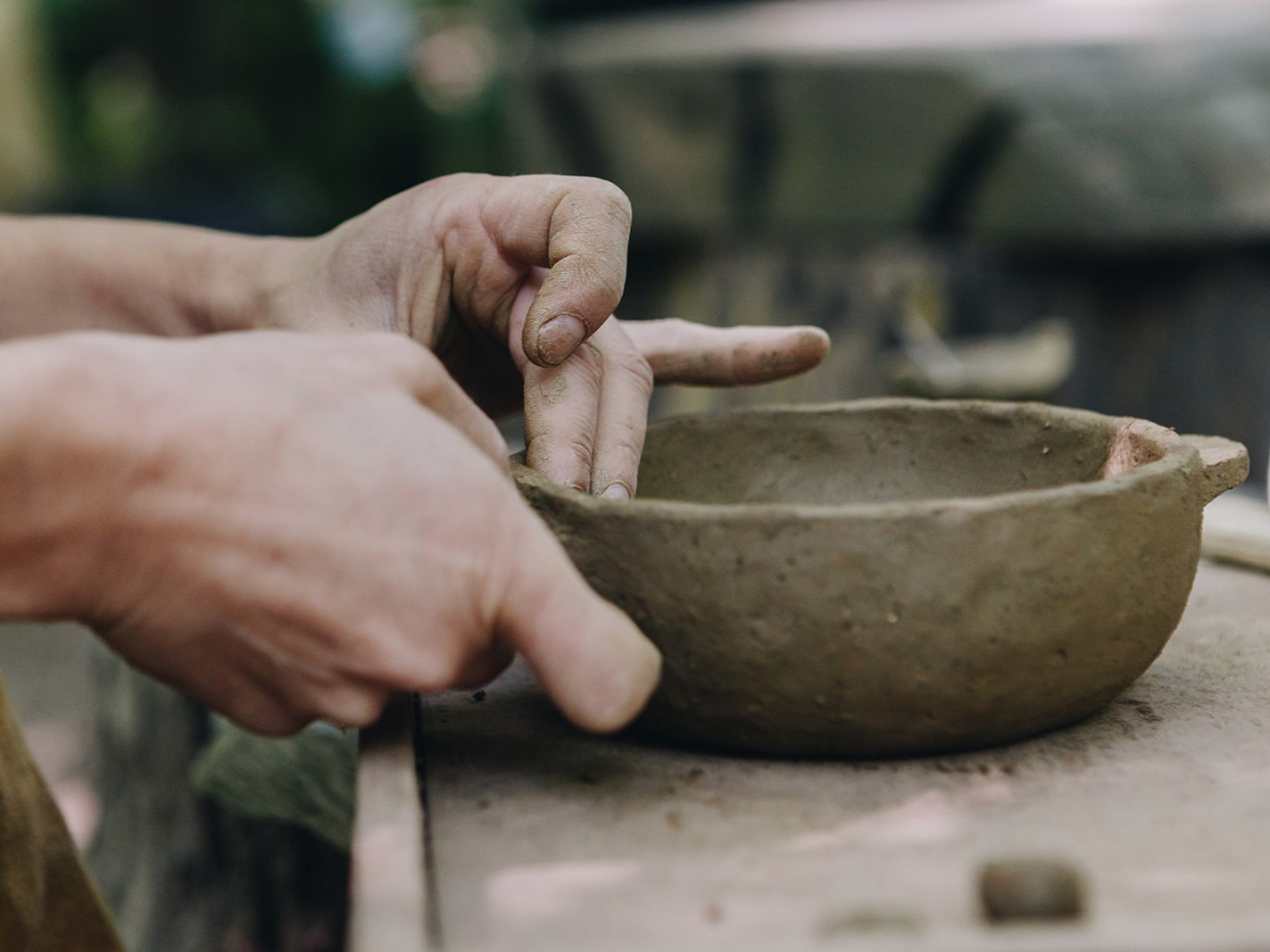
Last year I was visiting a potter friend in Devon. We arranged to meet in her shared studio mid morning; I arrived feeling head-achy and grumpy. She brightly introduced me to her colleagues as a potter and invited me to make something.
I sat on a stool and squidged the lump of clay she’d given me into a sausage. I squashed it up into a ball and made a sausage again (waiting for inspiration about what to make). In the end I spent the whole morning just doing that. My piece of clay, by the end pretty dry, went in the recycling bucket. And I left feeling much, much lighter.
I always knew the importance of engaging the senses when handling materials, especially since I studied arts psychotherapy. But from the experience in Devon I felt a new respect for the simplicity and profundity of tactile engagement. And for sometimes doing only that.
Read about how to find wild clay in the landscape and how to dig your own here
I offer Wild Pottery courses several times a year in Sussex woodland.
